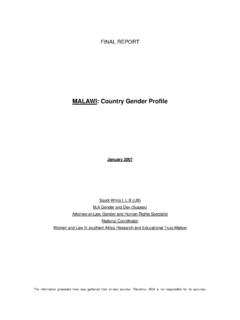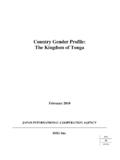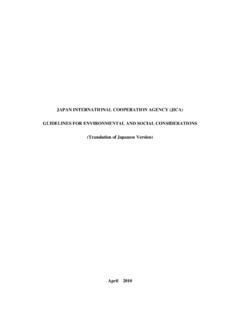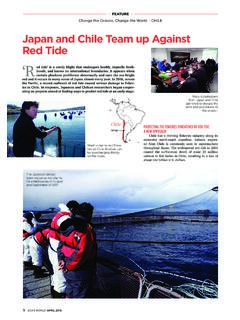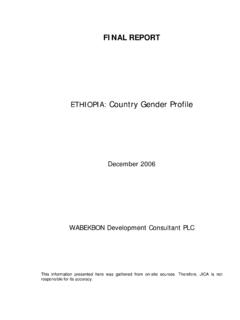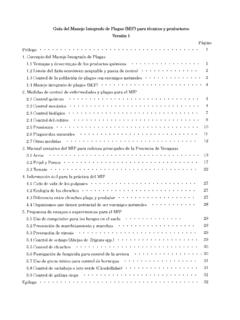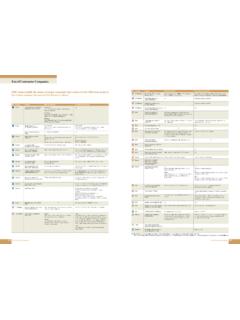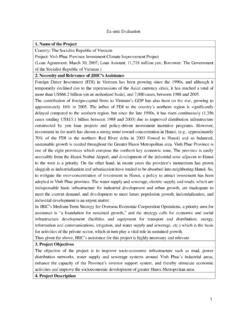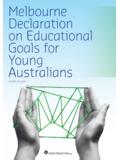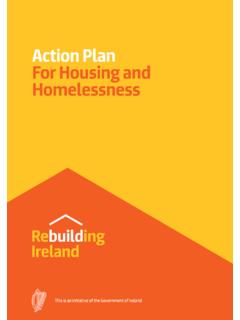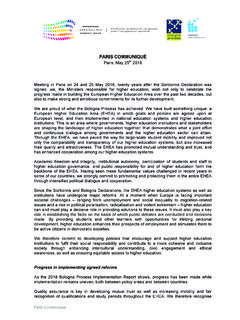Transcription of Country Gender Profile: Papua New Guinea - JICA
1 Country Gender profile : Papua New Guinea February 2010 JAPAN INTERNATIONAL COOPERATION AGENCY IMG Inc. PPD JR 10-007 Table of Contents Papua New Guinea Summary .. ii List of Abbreviations .. v 1. Basic profiles .. 1 1-1 Socio-Economic profile .. 1 1-2 Health profile .. 3 1-3 Education profile .. 4 2. General Situation of Women and Government Policy on Gender .. 5 2-1 General Situation of Women in Papua New Guinea .. 5 2-2 Government Policy on Gender .. 9 2-3 National Machinery for the Advancement of Women .. 11 3. Current Situation of Women by Sector .. 14 3-1 Education .. 14 3-2 Health .. 18 3-3 Agriculture, Forestry and Fisheries.
2 23 3-4 Economic Activities .. 27 3-5 Disaster Management and Environment .. 32 4. Gender Issues and the Importance of Their Consideration when Planning Future Country Interventions .. 35 (1) Considering socio-economic and socio-cultural factors in Gender -related programs/projects .. 35 (2) Gender mainstreaming in disaster management and environmental management .. 36 (3) Women s empowerment in agriculture and fisheries .. 36 (4) Mainstreaming Gender in PNG governmental departments .. 37 5. On-going Gender Projects .. 38 6. Gender Information Sources .. 41 ii6-1 List of Organizations related to Gender .. 41 6-2 List of reports and references related Gender .
3 43 7. Definitions .. 45 8. References .. 47 iiSummary Summary of Country Gender profile in Papua New Guinea (2010) Current Situation of Women in Papua New Guinea 1) Papua New Guinea (PNG) has a largely heterogeneous population with most communities being patriarchal1 and women generally suffering as a result of their low social status. PNG s Gender -related Development Index (GDI) in 2005 was , placing it 124 among the 157 countries assessed, with the life expectancy of females being lower than that of males. Women generally suffer from excessive workloads, mal-nutrition, poor access to safe water and healthcare service, excessively repeated pregnancies, and Gender -based violence.
4 Gender -based violence is so prevalent that the Department for Community Development (DFCD) recognizes it as a serious problem. However, sufficient concrete actions have not yet been taken by the relevant 2) Women are poorly represented in decision-making systems with only one out of 109 seats in parliament being held by a woman, who also holds a ministerial post, and there being only one female judge in the 27 national level judicial positions. 3) In many rural communities, where traditional customs still largely dominate the everyday life of the inhabitants, women tend to face more serious challenges than in urban areas such as polygamy, child marriage, and witch-hunts.
5 Additionally, the custom of paying a bride price reinforces the view of women being the property of men. Gender Policy on Gender 1) In the national development strategies (Medium Term Development Strategy 2005-2010 and the newly launched Papua New Guinea Vision 2050), Gender perspectives are incorporated neither systematically nor strategically. National Women s Policy (1991) is outdated and its reassessment process is currently underway. Though there are some laws intended to protect women, due to the government s inadequate capacity to uphold law and order, they are largely ineffectual.
6 National Machinery 1) In 2008, when the Department of Women and Children was reformed into the Department for Community Development (DFCD), the National Gender Machinery, the Office for the Development of Women (ODW), was established in the DFCD and activated in July 2009. ODW aspires to address issues concerning policy and strategy formulation, Gender -related research, coordination with other line agencies, and monitoring of achievements in relation to international commitment. However, due to budget constraints, it remains to be seen how much can actually be achieved. Situation of Women/ Gender in Education 1) Women s literacy rates remain low at compared to for men (2007).
7 The government launched the Gender Equity in Education Policy to address this disparity, and is currently trying to provide universal basic education to all children. Females in younger generations are catching up with 1 Several maternal communities also exist in the East. iiitheir male counterparts. 2) However, in rural areas where nearly 90% of the population resides, many people have limited or no access to education due to the limited number of schools and the physical distance to schools. This has contributed to the completion rate for the grade 6 of girls in several remote regions being very low.
8 Approximately half of the girls who attend the primary schools move on to the secondary school level. Many girls leave schools after puberty due to the lack of schools as well as sexual harassment and abuse, and preparations for marriage. 3) In tertiary education, females are predominantly enrolled in the study of women s skills, nursing, secretarial work, and teaching. The percentage of female students to male students in universities in 2007 was 35% to 65%. Situation of Women/ Gender in Health 1) Maternity and child healthcare, and HIV/AIDS are among the priority areas of the National Health Plan 2001-2010. However, due to financial deficiencies and a lack of political initiative, programs in the Plan have yet to be implemented.
9 2) In rural areas, the public health service system has nearly collapsed with half of the health facilities having ceased to function. 3) The Maternal Mortality Rate (MMR) increased from 370/100,000 (deaths/per live births) (1996) to an excessively high 733/100,000 (deaths/per live births) (2006). An estimated 40% of pregnant women experience pregnancy-related health problems during childbirth or the ante/postnatal periods. 4) Total Fertility Rate (TFR) remains high at in 2006, with no sign of decreasing. Yet, the current usage of family planning (F/P) is still relatively low with only of women aged 15-49 having ever used any type of modern contraceptive methods.
10 This is considered to be caused largely by myths and misconceptions, the low quality of F/P-related services, the low status of women in the family, and the non-involvement of men (the main decision makers) in F/P matters. 5) In PNG, the majority of HIV infections are caused through heterosexual intercourse with women, especially young women, being at high risk. The National Strategic Plan on HIV/AIDS 2006-2010 did not appropriately incorporate Gender perspectives resulting in the later formulation of complementary National Gender Policy and Plan on HIV and AIDS 2006-2010. However, both policies have not been effectively implemented.
